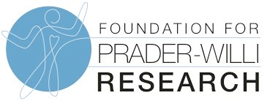Many children with PWS are affected by early language delays. If those delays aren't addressed, the affects can be far-reaching, not just in school, but beyond. Research on these delays shows a number of therapies to be very effective, but it isn't reaching the classrooms where the vast majority of children spend their days.
At FPWR's fall 2016 conference, we were privileged to have Ellen Brigger, M.Ed, present on the latest research on early language delays, how these delays can be addressed in the classroom, and what parents need to do to make that happen. A video of her presentation is below, along with a summary of her talk. Brigger works at the St. Rita School for the Deaf in Cincinnati, Ohio and has been teaching children with apraxia since 1999.
“The impact of an early language delay can be pervasive […], there is a ripple effect that may go on through the years.” Brigger began her talk with some compelling research findings about the long-term effects of an early developmental speech / language impairment that goes unaddressed. Along with negative impacts on academic performance, such delays also put children at greater risk for psycho-social problems, anxiety disorder, and behavior problems. These challenges are often further compounded by comorbidities linked to early speech / language impairment, include apraxia, ADHD, Executive Function Disorder, sensory processing issues, dyslexia, and memory problems.
Language Delay Research Points to Solutions
“The fix is not that hard,” Brigger nonetheless assured us. “For the last forty years, we’ve had some of the most exciting research that has come out […]. Unfortunately, in a lot of parts of this country, it’s just not getting into the classroom.” She emphasized the importance of parental advocacy in prompting schools to take up alternative approaches, and to incorporate them into Individualized Education Programs or IEPs. “There’s no better expert than you when it comes to your child.”
Brigger then laid the framework for understanding the causes, manifestations and effects of language delays. She began with oral language development, stressing its importance as the foundation for all language. “Oral language starts early – in the womb.” Because of this early start, Brigger appealed especially to parents of young children to “make sure that your child has a rich language environment because these years […] are so critical for language development.” Moreover, she explained, while exposure to language-rich surroundings (including reading aloud and singing) is important, oral language itself is not taught; rather, specific parts of the brain are designated for oral language, both receptive (listening/comprehending) and expressive (speaking). These two forms of oral language, in turn, form the basis for reading and writing, such that when problems arise with reading or writing, their origins may reside in a breakdown in the mechanisms of oral language. “When oral language is disorganized and lacks clarity, there is a breakdown in learning written language.” Indeed, oral language problems are linked to delays in vocabulary acquisition, word retrieval (memory of pronunciation, spelling and meaning), syntax, grammar, complex sentence structure, and organization.
Seven Treatment Program Areas
“While the problem is neurobiological, the treatment is educational,” Brigger observed, in that it requires intervention from teachers. Arriving at an effective form of remedial education, she noted, means moving past traditional approaches, which are meaning-based versus sound-based, which do not take into consideration readers with problems at the phonetic level, and which move too quickly for the student with a language delay. Instead, Brigger recommended “a research-based program that’s going to systematically teach all of those sounds, systematically teach those language skills [that are lacking].”
Such a program, she argued, needs to address seven areas: phonemic awareness, phonics and word recognition, fluency, vocabulary development, reading comprehension, basic writing skills, and comprehension and using spoken language. Just as important as the content is the style of instruction for such students, she stated, noting that the approach must be explicit, systematic, cumulative, multisensory, sequential and data-driven. Moreover, an array of critical skills, from the sound- and letter-levels, to the levels of word and sentence, must be consistently monitored. Among the several research-based programs available to train teachers in these types of alternative approaches are Orton-Gillingham, Lindamood-Bell, Spalding and Wilson methods.
Teaching the Right-Brain Thinker
In discussing examples of fruitful approaches to reading with children with speech/language impairment, Brigger said that research suggests that these children often are stronger "right-brain" thinkers, and this should in turn inform the way we teach them. This means that they tend to be ‘whole to part’ learners, meaning that they do better if given the chance to see the big picture and to grasp context, rather than beginning with a sequential approach to the material. Moreover, they're more visual learners, suggesting the particular importance of using visual inputs — charts, photos, templates and models, along with sign language — as part of the learning process. In addition, they think concretely and learn best with multisensory input, as well as experience-oriented learning, such as project-based learning.
Such learners, Brigger stressed, also are characterized by having difficulty with grasping the concepts of past and future, and tend instead to think in terms of a continuous present, which of course has significant implications, including for understanding sequential thinking. Lastly, such learners benefit immensely from a pace that allows them more time to process their learning, precisely because of they “have trouble finding words” and “need more time to process.”








